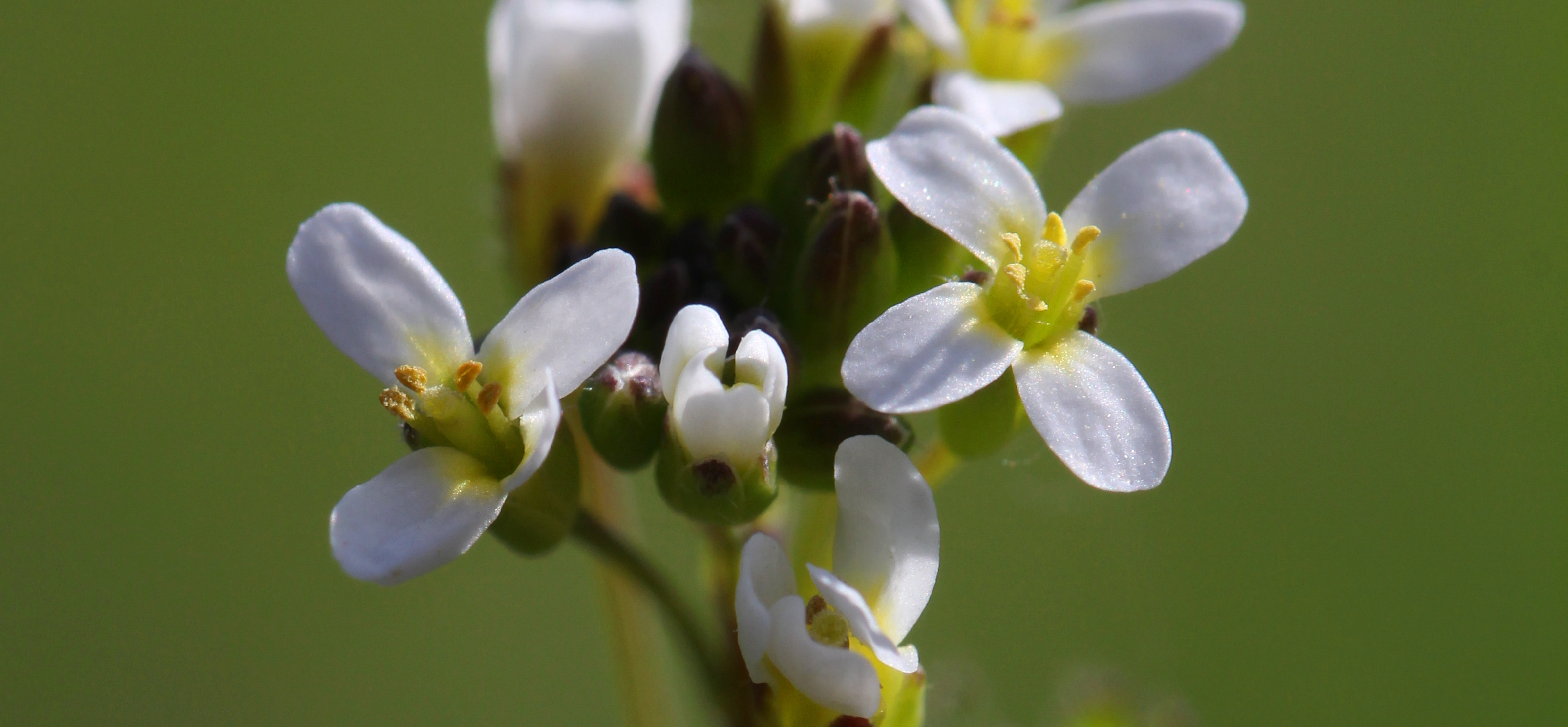thale cress
(Arabidopsis thaliana)

Description
Arabidopsis thaliana, the thale cress, mouse-ear cress or arabidopsis, is a small flowering plant native to Eurasia and Africa. A. thaliana is considered a weed; it is found along the shoulders of roads and in disturbed land. A winter annual with a relatively short lifecycle, A. thaliana is a popular model organism in plant biology and genetics. For a complex multicellular eukaryote, A. thaliana has a relatively small genome around 135 megabase pairs. It was the first plant to have its genome sequenced, and is a popular tool for understanding the molecular biology of many plant traits, including flower development and light sensing. Arabidopsis thaliana is an annual (rarely biennial) plant, usually growing to 20–25 cm tall.The leaves form a rosette at the base of the plant, with a few leaves also on the flowering stem. The basal leaves are green to slightly purplish in color, 1.5–5 cm long, and 2–10 mm broad, with an entire to coarsely serrated margin; the stem leaves are smaller and unstalked, usually with an entire margin. Leaves are covered with small, unicellular hairs called trichomes. The flowers are 3 mm in diameter, arranged in a corymb; their structure is that of the typical Brassicaceae. The fruit is a siliqua 5–20 mm long, containing 20–30 seeds. Roots are simple in structure, with a single primary root that grows vertically downward, later producing smaller lateral roots. These roots form interactions with rhizosphere bacteria such as Bacillus megaterium. A. thaliana can complete its entire lifecycle in six weeks. The central stem that produces flowers grows after about 3 weeks, and the flowers naturally self-pollinate. In the lab, A. thaliana may be grown in Petri plates, pots, or hydroponics, under fluorescent lights or in a greenhouse. A. thaliana is native to Europe, Asia, and Africa, and its geographic distribution is rather continuous from the Mediterranean to Scandinavia and Spain to Greece. It also appears to be native in tropical alpine ecosystems in Africa and perhaps South Africa. It has been introduced and naturalized worldwide,including in North America around the 17th century. A. thaliana readily grows and often pioneers rocky, sandy, and calcareous soils. It is generally considered a weed, due to its widespread distribution in agricultural fields, roadsides, railway lines, waste ground, and other disturbed habitats, but due to its limited competitive ability and small size, it is not categorized as a noxious weed.
Taxonomic tree:







